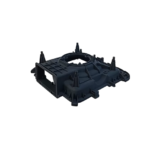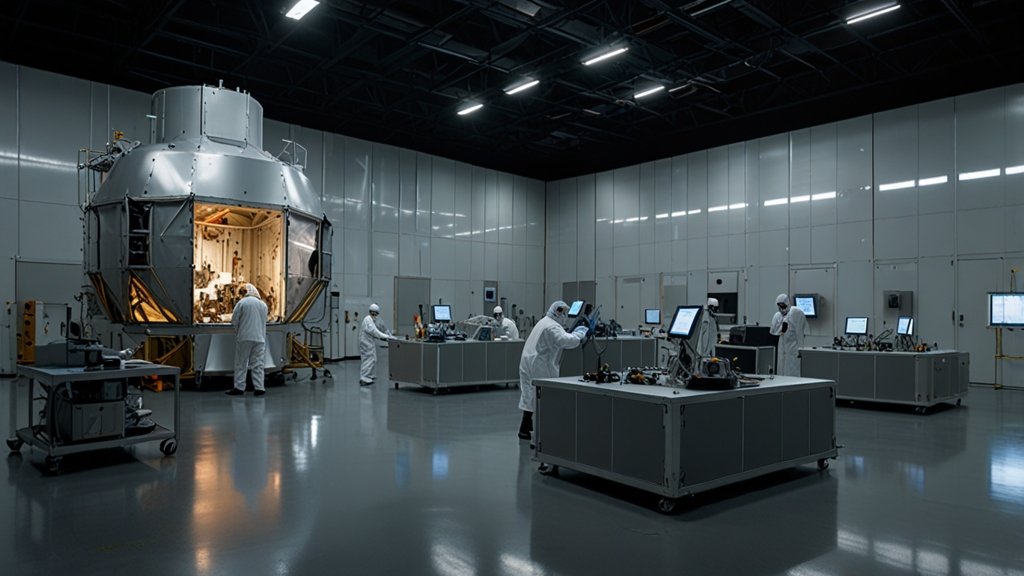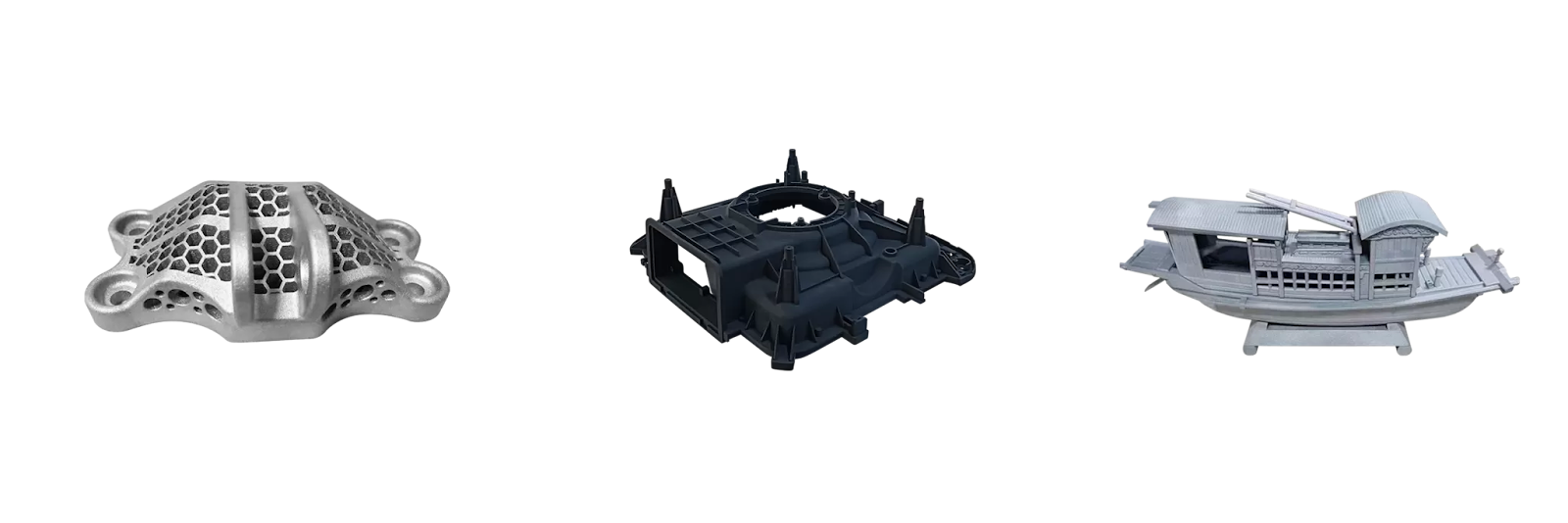Imagine a pristine, hushed room. Technicians glide in bunny suits, moving with practiced precision around a gleaming satellite module. Next door, a thunderous roar shakes the walls as a jet engine component endures simulated flight stresses. Down the hall, intricate circuitry undergoes a punishing deep freeze. This isn’t sci-fi; this is the crucible of modern aerospace and defense: the Assembly and Test Area (a&ta). It’s the mission-critical stage where complex hardware transforms from individual parts into flight-ready systems, proving it can survive the unforgiving realities of space or combat. Fail here, and billions are lost, missions crumble, or lives are endangered. Pass? You earn the right to fly.
Welcome to the high-stakes world of the a&ta, the unsung hero of technological triumphs. Think of it as a spacecraft hospital and boot camp combined – where integration happens under a microscope and resilience is forged through fire (and ice, and vacuum, and vibration). Without these specialized facilities, pushing the boundaries of exploration and national security wouldn’t be just difficult; it’d be impossible. Let’s pull back the curtain on these vital zones.
Why the a&ta Isn’t Just Another Room in the Factory
At its core, an a&ta is far more than just assembly space. It’s a meticulously controlled ecosystem designed for one paramount purpose: verification and validation under extreme simulated conditions. While manufacturing builds the pieces, the a&ta is where the complete system proves it works as intended and, crucially, keeps working when pushed to its absolute limits.
- The Integration Nexus: This is where complex subsystems – avionics, propulsion, power, thermal control, payloads – come together. Precision alignment, delicate wiring harnesses, and critical fluid connections are made under controlled environmental conditions to prevent contamination or damage.
- The Testing Gauntlet: Once assembled, hardware enters the proving grounds. This involves subjecting it to simulated mission environments far harsher than it might ever actually face. Why? To uncover hidden flaws before it’s too late.
- The Quality Fortress: Every step within the a&ta adheres to rigorous standards and protocols. Documentation is paramount. Traceability is absolute. The goal is not just function, but certifiable reliability and safety.
The Anatomy of an a&ta: More Than Just Clean Walls
An effective a&ta is a symphony of specialized infrastructure and stringent controls:
- Cleanrooms (The Pristine Core): Essential for spacecraft, sensitive optics, and microelectronics. Particulate levels are tightly controlled (e.g., ISO Class 5, 7, or 8). Temperature and humidity are regulated. Staff wear full cleanroom garments (bunny suits) to minimize contamination. Static electricity control (ESD) is critical.
- Test Cells & Chambers (The Stress Labs): These are the workhorses where simulations happen:
- Thermal Vacuum Chambers (TVAC): Replicate the extreme temperatures and vacuum of space. Hardware cycles between scorching heat (facing the sun) and deep cold (in shadow).
- Vibration & Shock Test Systems: Simulate the brutal shaking of launch or explosive events. Electro-dynamic shakers or hydraulic systems subject hardware to specific frequency profiles.
- Acoustic Test Chambers: Expose hardware to the deafening noise levels experienced during launch.
- EMI/EMC Chambers: Ensure electronic systems function correctly without interfering with each other (Electromagnetic Interference/Compatibility).
- Centrifuges: Test components under high G-forces.
- Support Systems (The Unsung Heroes): Robust power supplies (clean, stable), specialized data acquisition systems, high-pressure gas lines (for pneumatic testing), cryogenic fluids, and sophisticated control rooms monitoring everything in real-time.
- Procedural Rigor (The Rulebook): Strict access control, safety protocols (especially for hazardous testing like propulsion), configuration management (ensuring the exact tested version flies), and comprehensive documentation for every action and result.
Common a&ta Test Chambers & Their Missions
| Chamber Type | What It Simulates | Key Applications | Why It’s Critical |
|---|---|---|---|
| Thermal Vacuum (TVAC) | Space Vacuum & Extreme Temperatures | Satellites, Spacecraft Modules, Space Suits | Verifies survival/operation in the space environment; detects material outgassing |
| Vibration Shaker | Launch Stresses, In-flight Vibes | Rocket Components, Aircraft Structures, Electronics | Ensures structural integrity won’t fail under dynamic loads |
| Acoustic Chamber | Intense Launch Noise | Fairings, Sensitive Payloads, Vehicle Structures | Confirms components won’t be damaged by sound pressure |
| EMI/EMC Chamber | Electromagnetic Interference | Avionics, Radios, Control Systems | Guarantees systems won’t interfere or be interfered with; essential for safety |
| Altitude Chamber | Low Pressure (High Altitude) | Aircraft Components, Life Support Systems | Tests performance and sealing integrity at flight altitudes |
Also Read: Pro-Reed Com Tech Tales: Where Innovation Wears a Human Face
The a&ta Workflow: From Parts to Proven Performer
The journey through an a&ta is a structured, phased approach:
- Receiving Inspection & Kitting: Components arrive and undergo rigorous incoming inspection against specifications. They are then staged (“kitted”) for the assembly sequence.
- Sub-Assembly Integration: Smaller systems are built up in controlled areas before integration into the larger whole (e.g., assembling a spacecraft bus or an aircraft radar unit).
- Major Assembly: Bringing major sub-systems together into the final configuration within the cleanroom or high-bay assembly area. Precision tooling and alignment fixtures are crucial.
- Functional Testing (Initial): “Power-on” tests to verify basic connectivity, communication, and subsystem functionality before environmental testing.
- Environmental Testing (The Gauntlet): The system undergoes its battery of simulated mission stresses (TVAC, Vibe, Acoustics, EMI/EMC) – often sequentially, sometimes in combination. Performance is monitored continuously.
- Post-Environmental Functional Testing: Thorough re-verification after each environmental test phase. Did everything survive? Does it still work perfectly? Any performance degradation?
- Final Verification & Acceptance: Comprehensive system-level testing against all requirements. Review of all test data, procedures, and documentation. Formal sign-off for flight readiness or deployment.
- Preparation for Shipment: Safely packaging the proven hardware for transport to the launch site or operational base.
The High Cost of Skipping the a&ta (Real-World Stakes)
The a&ta isn’t a luxury; it’s a necessity born from painful lessons. Cutting corners here risks catastrophic failure:
- Mission Failure: A single faulty solder joint, a material that outgasses in vacuum, or a component that resonates destructively during launch can doom a billion-dollar satellite or crewed mission. The a&ta finds these flaws.
- Safety Hazards: Undetected flaws in military aircraft systems, missile guidance, or vehicle control systems can have tragic consequences. Rigorous testing saves lives.
- Costly Delays & Rework: Discovering a major flaw after integration or, worse, after launch/delivery, is exponentially more expensive and time-consuming to fix than catching it in the controlled a&ta environment.
- Reputational Damage: High-profile failures erode public trust and investor confidence in aerospace and defense organizations.
Case in Point: NASA’s rigorous a&ta processes, honed over decades, are legendary. Every component of the James Webb Space Telescope underwent exhaustive testing – including famously unfolding its massive sunshield in a giant TVAC chamber at Johnson Space Center – before its flawless deployment. This meticulous verification in the a&ta was fundamental to its groundbreaking success.
Beyond NASA: The Ubiquitous Reach of the a&ta
While NASA missions capture headlines, a&ta facilities are fundamental across the aerospace and defense spectrum:
- Defense Contractors: Testing fighter jet radars, missile guidance systems, armored vehicle electronics, and naval combat systems under simulated battlefield conditions.
- Commercial Satellite Operators: Ensuring communication satellites can withstand launch and operate reliably for 15+ years in the harsh space environment.
- Launch Vehicle Providers: Qualifying rocket engines, avionics, and structures for the violent ascent to orbit.
- Unmanned Systems (Drones/UAVs): Testing autonomy systems, sensors, and airframes for military and commercial applications.
- High-Reliability Electronics: Even beyond aerospace/defense, industries requiring ultra-reliable electronics (medical devices, some automotive) utilize principles and sometimes dedicated facilities akin to an a&ta.
The Future of the a&ta: Smarter, More Integrated, More Vital
As technology advances, so too does the a&ta:
- Digital Twins: Creating high-fidelity virtual replicas of hardware allows for simulated testing and prediction of issues before physical assembly, optimizing the physical test campaign in the a&ta.
- Advanced Automation & Robotics: Robots handling precise assembly tasks or positioning heavy test articles within chambers, improving repeatability and safety.
- Enhanced Sensing & Data Analytics: More sensors embedded in test articles, combined with AI/ML analyzing vast amounts of test data in real-time, enabling predictive maintenance on the test hardware itself and faster anomaly detection.
- Modular & Flexible Facilities: Designing a&ta to be more adaptable to handle a wider variety of test articles and changing program needs efficiently.
- Focus on Cyber-Physical Security: Protecting sensitive test data and the integrity of the test environments themselves from cyber threats becomes increasingly critical.
You May Also Read: XSON208: The Silent Revolution Transforming How Industries Operate
Conclusion
The a&ta is the silent guarantor of success in the high-stakes arenas of space exploration and national defense. It’s where theoretical designs meet unforgiving reality, where “hopefully it works” transforms into “proven it works.” From the sterile silence of a cleanroom to the bone-rattling roar of an acoustic test, the a&ta subjects humanity’s most advanced hardware to trials by fire, ice, vacuum, and force. It identifies weaknesses early, prevents catastrophic failures later, and ultimately ensures that when a rocket ignites or a critical defense system activates, it performs flawlessly. In the relentless pursuit of reliability and mission success, the a&ta isn’t just a facility; it’s the indispensable crucible where confidence is forged.
FAQs
Q: Is an a&ta just a fancy cleanroom?
A: No, while cleanrooms are often a critical component (especially for spacecraft), an a&ta encompasses much more. It includes the specialized test chambers (TVAC, vibration shakers, acoustic, EMI), support infrastructure, and the rigorous processes for integration, functional testing, and environmental qualification. The cleanroom is just one type of controlled environment within the broader a&ta.
Q: Why is testing in an a&ta so much more expensive than regular factory testing?
A: The costs stem from the specialized infrastructure (multi-million dollar test chambers), stringent environmental controls (massive HVAC, filtration systems), highly trained personnel, extensive instrumentation/data acquisition, significant energy consumption (especially for thermal/vacuum tests), and the sheer time required for meticulous setup, execution, and data analysis per test campaign. It’s an investment in preventing vastly more expensive failures later.
Q: Can’t we just simulate everything on computers now, making physical a&ta testing obsolete?
A: While computer simulations (Digital Twins) are incredibly valuable and constantly improving, they cannot yet fully replicate the complex, interacting physical realities and subtle material behaviors encountered in extreme environments. Physical testing in an a&ta remains essential for final validation, uncovering unforeseen interactions, and providing the absolute confidence needed for high-consequence missions. Simulation informs and optimizes physical testing; it doesn’t eliminate it.
Q: What kind of careers are involved in working within an a&ta?
A: a&ta require diverse expertise: Test Engineers (designing test plans/setups), Mechanical/Electrical/Aerospace Engineers (integration, troubleshooting), Technicians (assembly, instrumentation, chamber operation), Quality Assurance Specialists, Cleanroom Controllers, Safety Officers, Data Analysts, and Project Managers overseeing test campaigns.
Q: How long does a typical spacecraft or complex system spend in the a&ta?
A: This varies enormously based on complexity, but it’s often measured in months, sometimes even exceeding a year for flagship missions like major satellites or crewed spacecraft modules. Integration is meticulous, and environmental test campaigns (especially multiple cycles in TVAC and vibe) are inherently time-consuming processes requiring careful setup, execution, and analysis.
Q: Are there different “levels” or classes of a&ta facilities?
A: Yes, absolutely. Facilities range significantly in capability. Key differentiators include: cleanroom class (ISO level), size/weight capacity of test chambers, maximum vibration/acoustic levels achievable, TVAC chamber size and temperature range, available test types (EMI/EMC, centrifuge), and the level of security/classification for defense projects. Matching the a&ta capability to the program’s requirements is crucial.
Q: Does every single component go through the a&ta, or just the final assembled system?
A: It’s a tiered approach. Critical individual components often undergo qualification testing (sometimes in similar but perhaps smaller facilities) to prove their design. Sub-assemblies are tested. Then, the final integrated system undergoes rigorous acceptance testing within the a&ta. This “test like you fly” philosophy ensures the whole system works together in the flight configuration under expected environments.











